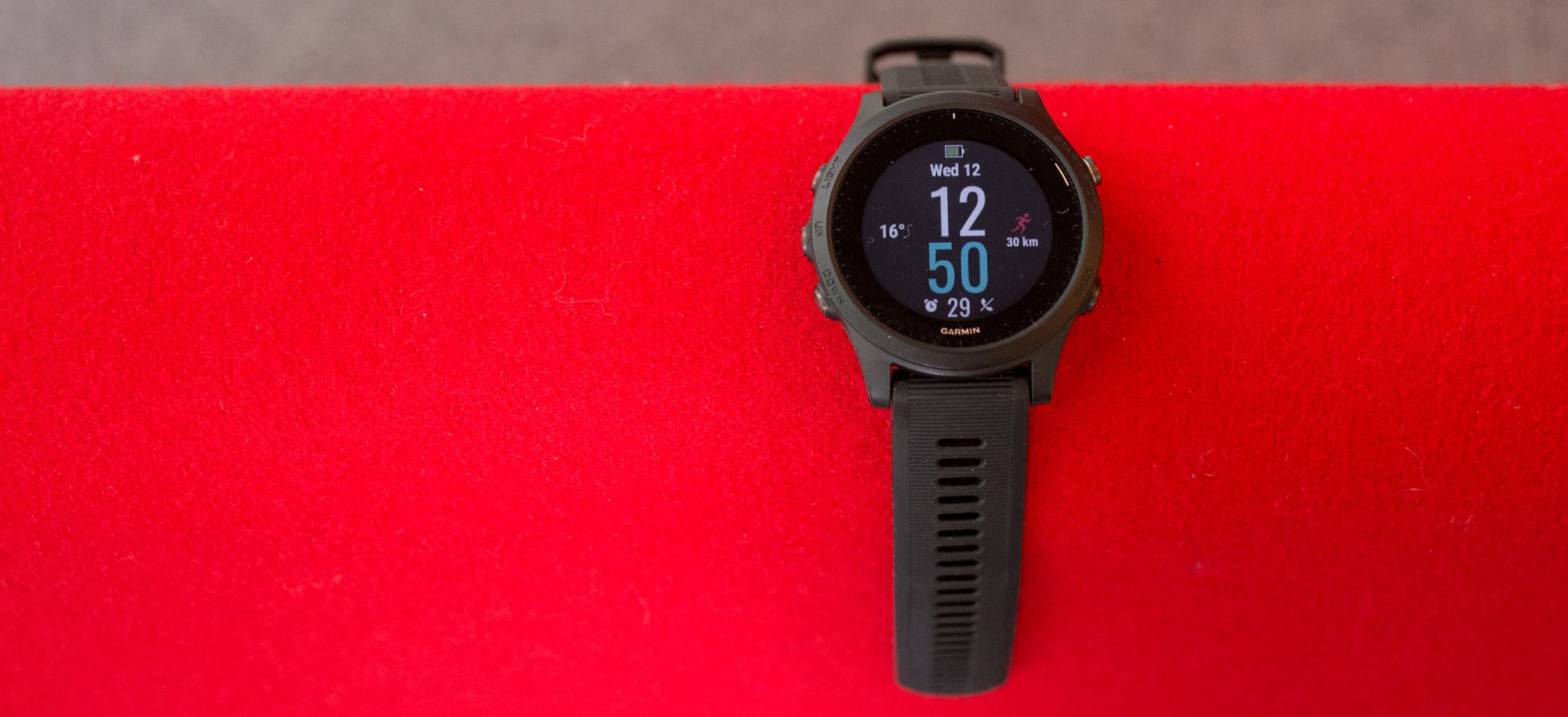Our Verdict
The newer Forerunner 955 offers some useful updates on the 945, including multi-band GPS and Garmin’s training readiness feature, but the Forerunner 945 still offers a brilliant experience to runners and triathletes. It has top-notch tracking, good training analysis, maps and music storage, and it’s usually in sales now so keep your eyes peeled for offers.
For
- Accurate sports tracking
- Maps and music
- Often in sales
Against
- No multi-band GPS
- No training readiness
- Won’t get future updates
You can trust Coach
The Garmin Forerunner 945 was released in April 2019 and in our original review we called it the best sports watch available. Obviously, it’s been surpassed in the years since, not least by its successor, the Garmin Forerunner 955. However, there’s life in the old dog yet and we’ve revised our assessment to place the Forerunner 945 in its current context, especially as there’s every chance it will appear in our Black Friday Garmin deals round-up.
Is The Garmin Forerunner 945 Worth It?
At its full RRP the Forerunner 945 is one to avoid, since that actually makes it more expensive than the new Forerunner 955, which has been updated with great features like training readiness analysis and multi-band GPS, along with having a larger screen and a solar model.
However, the Forerunner 945 is almost always reduced in price somewhere and the price drops below $350/£350 at times, and it’s hard to find a better watch for that money. Even though the 945 is unlikely to get many, if any, further software updates from Garmin, it’s already loaded with all the essential features you need for sports tracking – plus it has Garmin’s best-in-class mapping features.
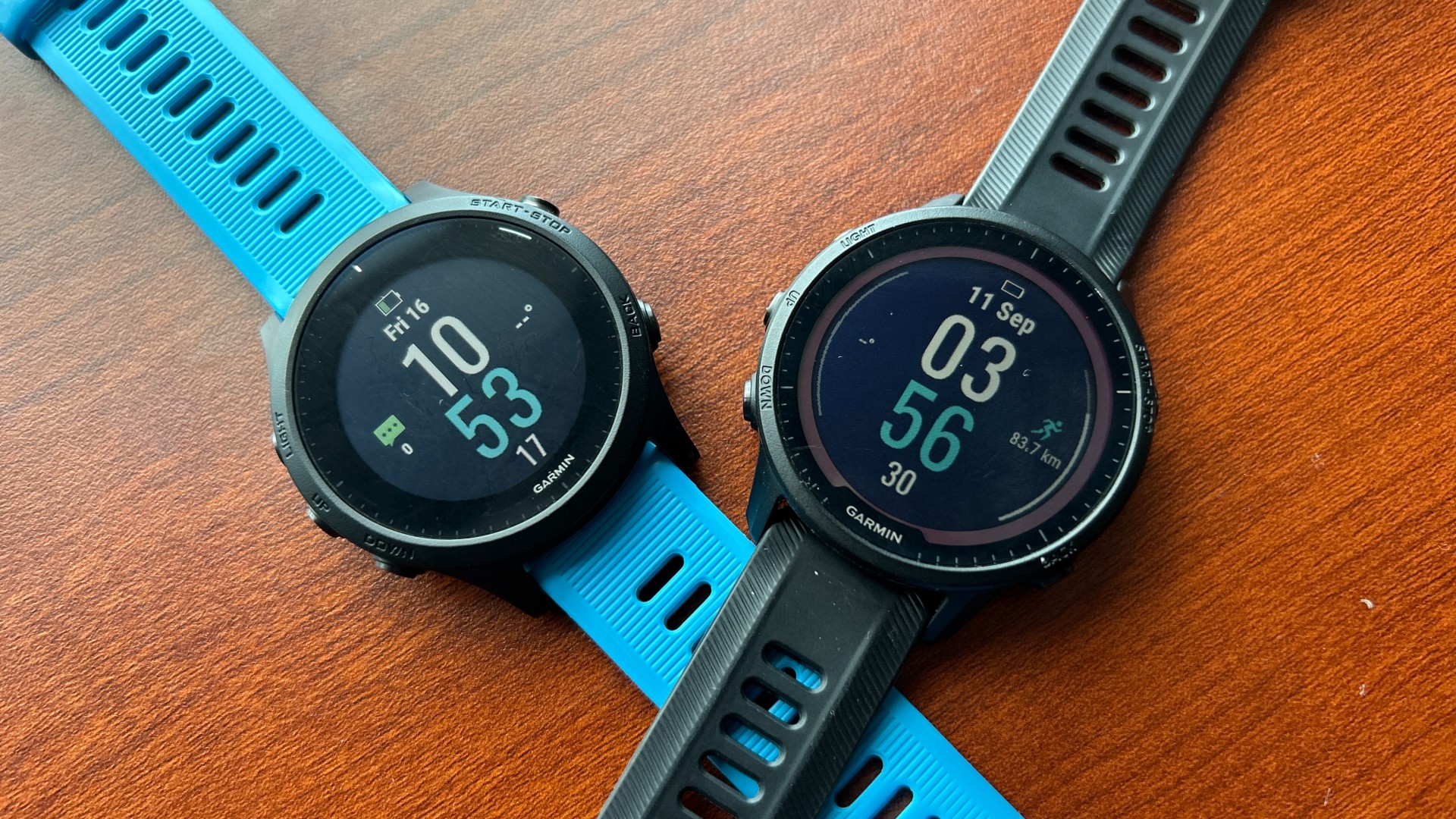
If you’re not excited by the updates on the Forerunner 955, finding a deal on the 945 is the way to go. Our Garmin Forerunner 955 vs Garmin Forerunner 945 article provides a more detailed comparison if you want to delve deeper.
Our original 2019 review continues below.
Running With The Garmin Forerunner 945
After spending six weeks with the Forerunner 945 running almost every day and taking part in several races, I can confidently say it’s the best running watch I’ve ever used. The depth of features is extraordinary, and Garmin does a great job in making these features accessible and easy to understand through widgets and colour-coded displays on the watch.
In terms of the basics, you can use GPS alone to track your runs, or GPS + GLONASS (the American and Russian satellite systems) or GPS + Galileo (the American and European systems), with the latter producing the most reliably accurate tracks in the UK in my experience. You can set up your data screens to show up to four stats at a time, and link the 945 to a footpod to display live info on your running technique or your running power stats.
Sign up for workout ideas, training advice, reviews of the latest gear and more.
You can set up interval workouts on the 945 itself or create more complicated structured workouts in the Garmin Connect app and sync them to follow on the watch. It also links to Garmin Coach, which is a new feature in the Garmin Connect app that sets up tailored training plans for events ranging from 5K to half marathon. These plans are easily synced with the 945, which will guide you through each of the workouts on the schedule. As the plans are designed more for beginner and improver runners (with a fastest 5K target time of 25 minutes, for example), Garmin Coach is probably aimed more at owners of the Forerunner 45 and 245 watches rather than the 945.
Where the 945 really does cater for serious athletes is with the range and depth of post-run analysis. That starts with details on the training effect of each run and how it’s improved your aerobic or anaerobic fitness, information that feeds into the analysis of your training load the watch provides.
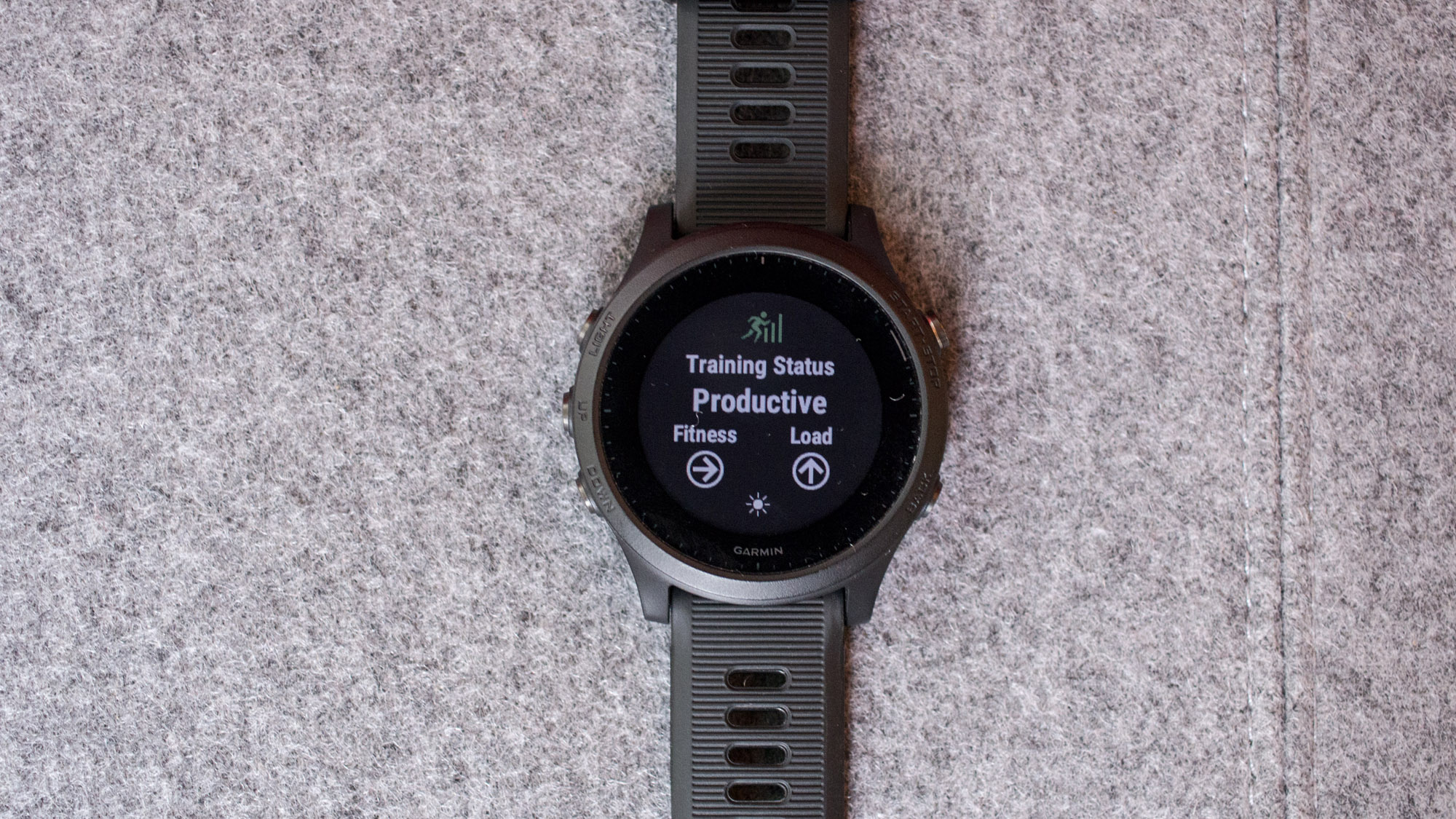
Along with a rating of whether your overall load is productive or not, the 945 breaks down the past four weeks of training into anaerobic, high aerobic and low aerobic and tells you whether you’re achieving the right balance between the three. This is a feature that has previously only been available on the luxury Marq Athlete, not even making it to Garmin’s flagship Fenix 5 Plus Series.
Anaerobic training broadly equates to running short intervals at close to your max, while high aerobic is steady yet still tough runs like tempo sessions, and low aerobic is easy running. An effective training plan requires the right amount of each type of training, and the 945 will let you know if the balance of yours could be improved. This is done via a simple graph and one-line explanation of what you should do, so even if you have little interest in the nuts and bolts of the energy systems used when running, it’s clear how you might tweak your training to improve it overall.
The 945 will also tell you how well you’re acclimatising to heat (when above 22°C) and altitude (when over 800m). I didn’t have much of a chance to test these features in London, although the short July heatwave did start building up my high-temp adaptation. While they might not do much for your everyday running, these features will be useful for any amateurs or pros who head out for sunny training camps at elevation.
As with other Garmin running watches, the 945 also rates your VO2 max and provides predicted race times for 5K, 10K, half marathon and marathon. My predicted times have always been very optimistic on past Garmins, but the 945 is overly negative. I ran a faster 10K than the time predicted by the 945 twice while wearing it and it didn’t adjust.
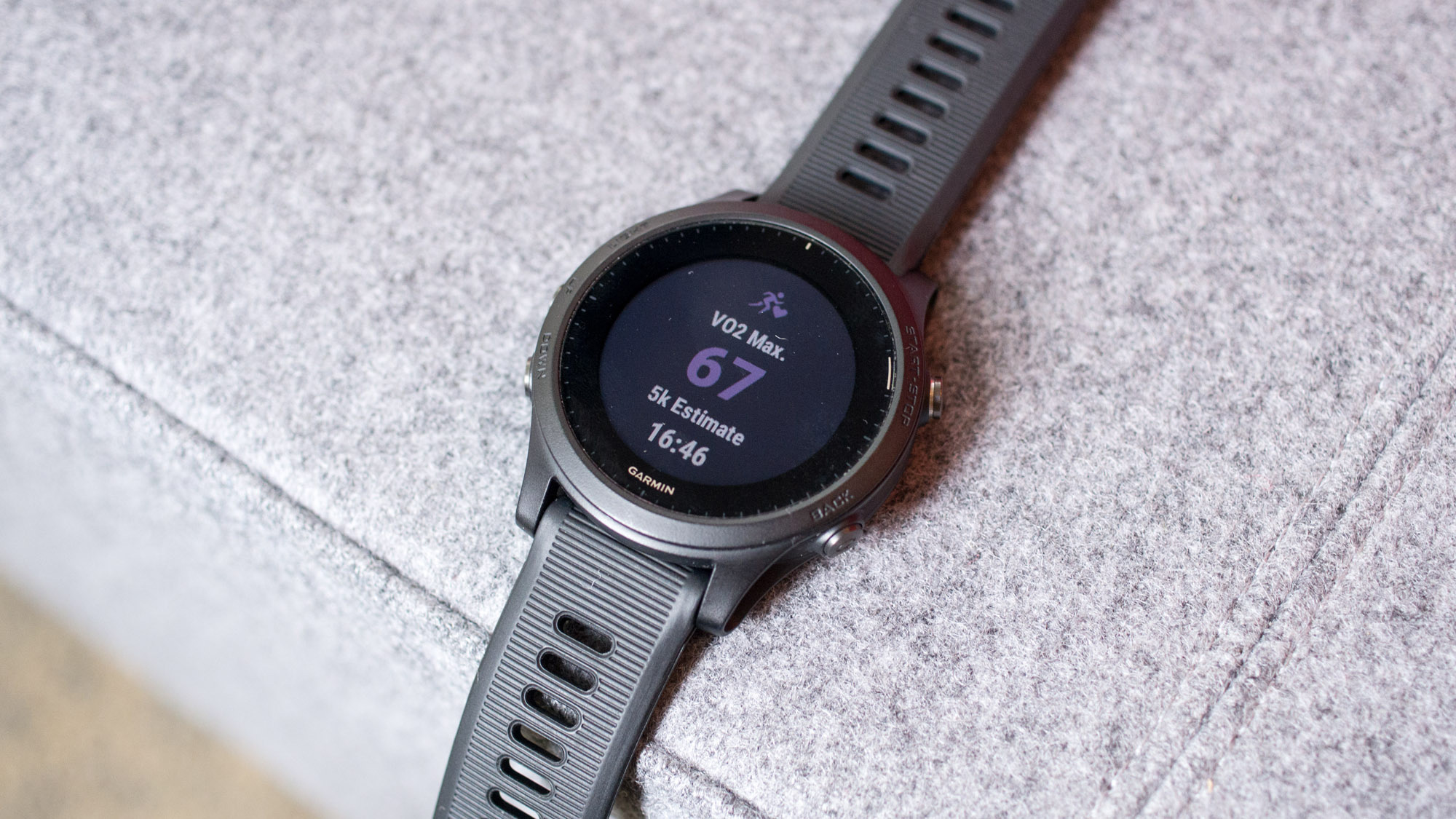
The mapping features of the 945 are brilliant for running. You can set up quick routes on the 945 itself, either before you start or halfway through if you’re trying to find the best way back to where you started from, or sync over your favourites from Garmin Connect. You can now create step-by-step routes in the app itself, though generally it’s easier to do this on the Garmin Connect website.
Having full colour maps on your wrist really does make it hard to lose your way while following a route. The 945 will also give you info like distance and elevation remaining, plus a breakdown of the climb you’re on, so you know whether you’re nearly at the top or if a disheartening incline is waiting just around the bend.
I found the optical heart rate tracking on the watch impressively accurate on all my runs, generally finishing up with an average heart rate within a beat or two of a chest strap reading. On short, sharp intervals the 945 did lag three or four seconds behind a chest strap when measuring the rise and fall of my heart rate, so if heart rate is absolutely crucial to the way you train then wearing a chest strap is still advisable as it is with all running watches, but the 945 was accurate enough that I didn’t feel the need to. The light, slim design no doubt helps on this front, since the watch sits close to the skin and doesn’t move around as much as the bulky Fenix 5 Plus, for example.
The Forerunner 945 truly is a remarkable running watch, offering brilliant tracking and training analysis plus the ability to map routes and play music, all within a lightweight device that packs in a chunky battery life of 36 hours of GPS. Right now, there’s nothing better out there for runners.
Sports Tracking With The Garmin Forerunner 945
The 945 has dedicated sports modes for pretty much everything, though often these don’t extend far beyond showing the duration of your activity along with the calories burned and heart rate. Along with running, the swimming and cycling modes are more fleshed out, with the ability to link up with cycling power meters and other sensors, and dedicated pool and open-water swimming modes.
It doesn’t track heart rate during swimming, which is a shame because other trackers do attempt to do this, but Garmins hold firm to the view that optical heart rate accuracy is often so wayward underwater that it’s not worth bothering with, instead suggesting you link to a compatible chest strap like the HRM-Swim.
When swimming you get sport-specific stats like stroke rate and SWOLF, and laps in an indoor pool and distance when outdoors, when the watch will use the GPS to track your swim. There is also a customisable multisport mode on the watch, as you’d expect from a triathlon-focused device.
Like other Garmin watches, the 945 will also attempt to count your reps automatically and identify the exercises you’re doing in the gym. This has never been the most successful feature on Garmin watches in my experience, but if you do click the lap button to signal the end of a set you can go in and amend the details afterwards in Garmin Connect.
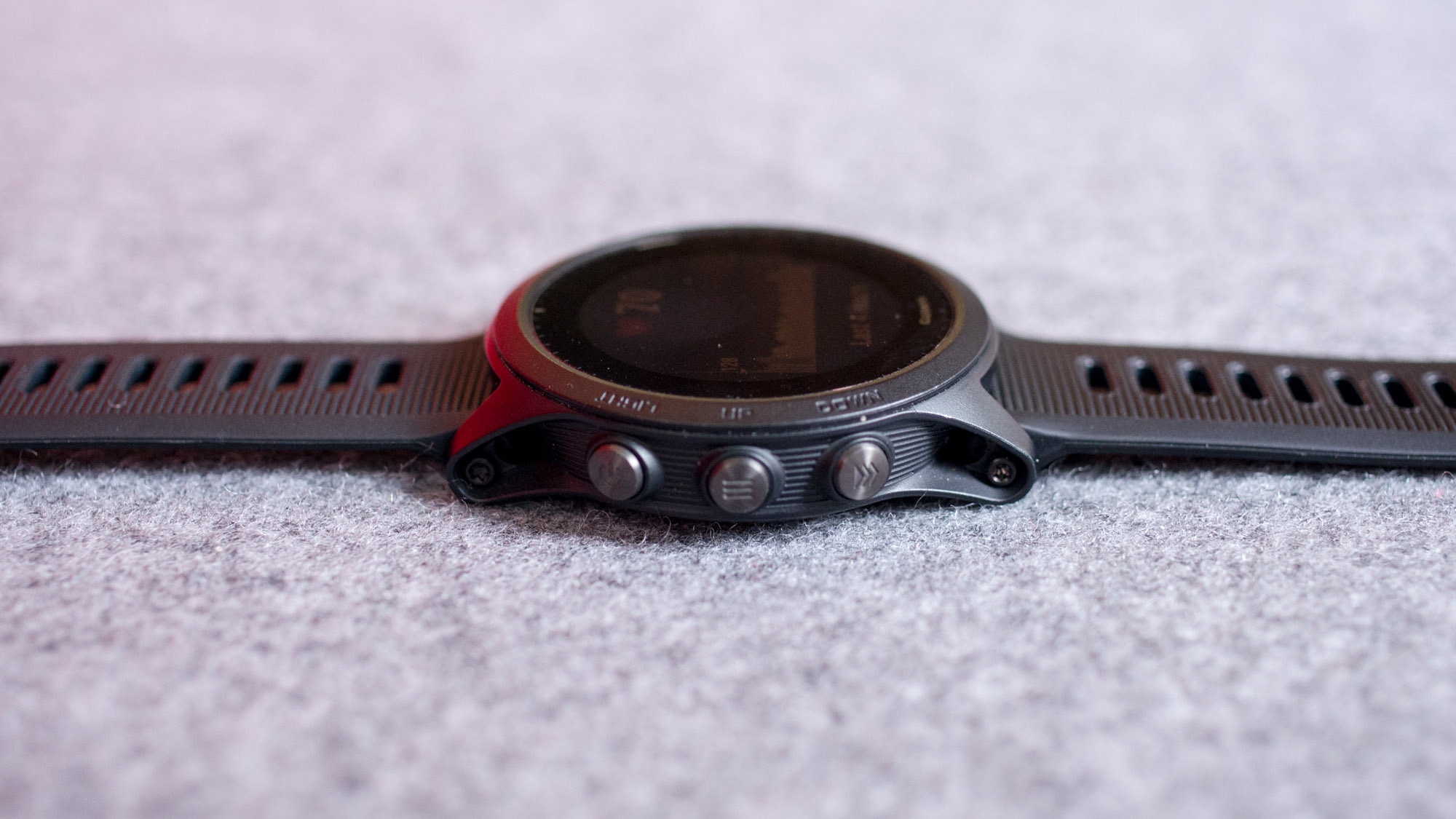
Activity Tracking With The Garmin Forerunner 945
Garmin has thrown all its everyday activity tracking features on to the 945, so although it is a sport-focused device it does a stand-up job on this front as well. Alongside the standard stats like steps, floors climbed, all-day heart rate, active minutes and calories burned, you get info on your stress based on your heart rate variability. There’s also Garmin’s Body Battery feature, which estimates your energy levels, giving it a score out of 100.
Given the target audience of the 945, we’re not sure how often these features will be used, but the ability to keep an eye on your stress levels and how well your body is recharging between tough workouts is helpful – even if you’ll probably defer to the recovery time and dedicated training load advice the 945 provides over these more lifestyle-oriented features.
Using The Garmin Forerunner 945 As A Smartwatch
Music is the star attraction when it comes to the smart features that have been added to the 945. You can load up your own music library via cables, or sync it with streaming services like Spotify and Deezer if you pay for a premium account. This will allow you to wirelessly update playlists on the watch, which is a lot more convenient than having to plug it in every time you want to change your workout power track.
Although I did notice the watch would disconnect from my phone’s Bluetooth more often than the older Fenix 5 Plus and 935 watches, I never had any dropouts when it was linked to headphones on a run or during a workout.
Other smart features include NFC (contactless) payments Garmin Pay, which is still limited to a handful of banks in the UK, of which Santander is the only high street option, plus the ability to load new watch faces and apps from the Connect IQ store. It’s mainly watch faces though, there’s little in the way of useful apps available, so you couldn’t compare what Garmin offers on this front to what’s available in the App Store or Google Play for smartwatches. They’re in a completely different league.
One other feature that Garmin has added is Assistance and Incident Detection, which alerts three contacts via text and email if you take a fall during an outdoor run or ride. You can also hold down the backlight button to activate the feature at any time. It’s a good idea and worth setting up when you first get the watch… just in case.
Sleep Tracking With The Garmin Forerunner 945
Garmin’s sleep tracking features have improved in the last year or so, and having a PulseOx sensor on the 945 could, in the future, yield interesting possibilities for identifying problems like sleep apnea. For now, all you get is your night’s rest broken down into light, deep and REM sleep, along with a graph of your movement.
There’s nothing to help you place this information in context, and I’ve always found with Garmin devices that the overall time asleep measured is generous because its watches count any time spent lying fairly still at night as light sleep, even if you’re actually awake reading, watching TV or, in my case of late, gently rocking a baby to try and get it to go back to sleep itself – enough movement, I’d have thought, to signal I wasn’t asleep.
Fitbit and Polar do much more in the way of sleep tracking than Garmin, and the latter’s Ignite sports watch will link how well you’ve slept to recommendations on the kind of activity you should do the following day. This will be key for sports watches in the future, I think, because the info on your recovery time and general training load is definitely undermined if it’s only taking into account your activities and not how well you’re recovering when sleeping.
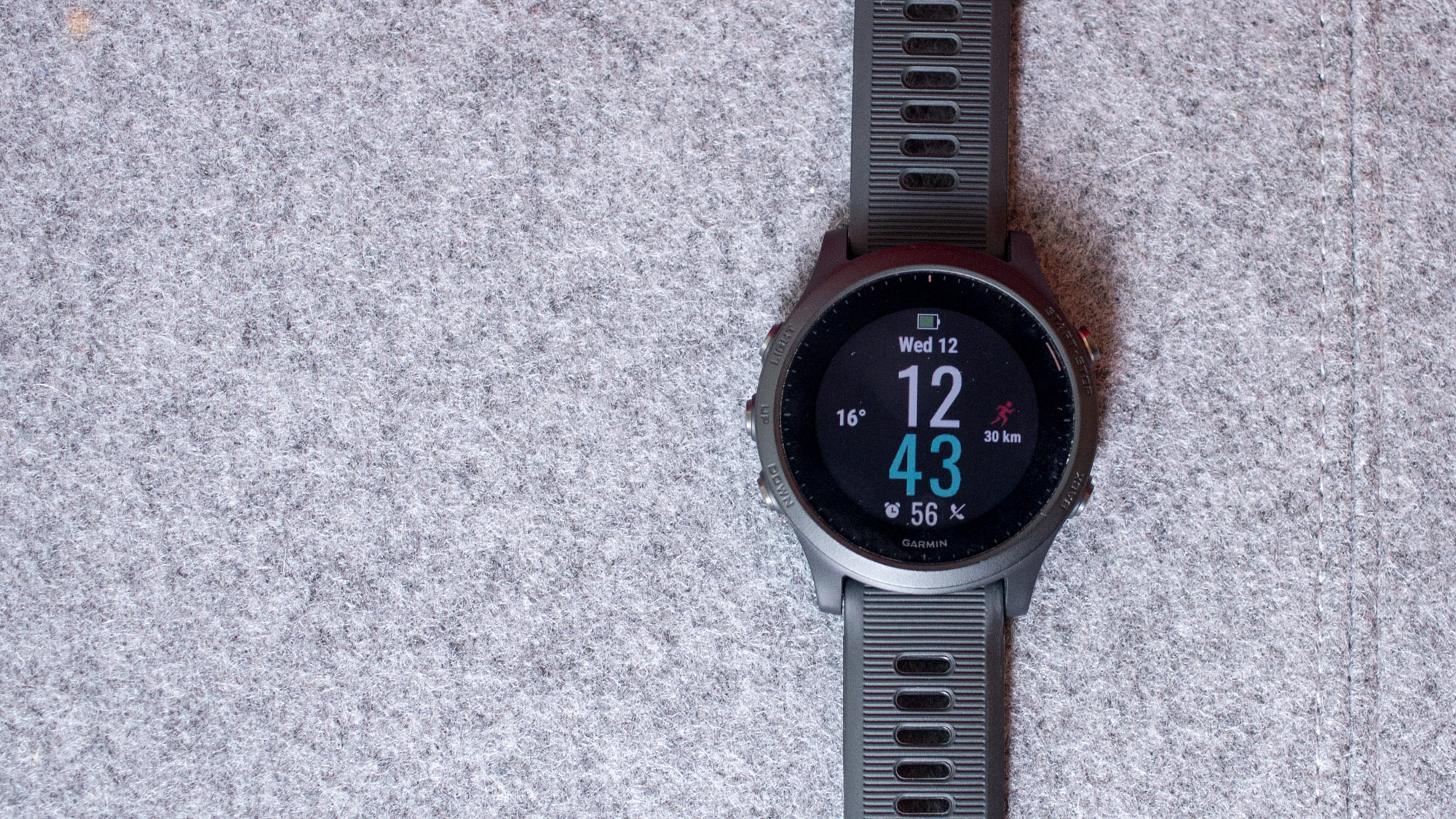
Battery Life
Even if you listen to music on the 945 every time you do a workout or go for a run, you’ll get a few days of battery out of the watch: its battery life is listed at ten hours of GPS and music, and 36 hours of GPS alone. If you’re just using it as a running or sports watch and rarely use the music, you’ll be able to go for ten to 14 days without having to plug in. Other features that can sap battery life are the PulseOx sensor, which is probably worth turning off unless you’re about to spend some time at altitude, and I also found that following routes during runs made the battery drain a little quicker than when just tracking them.
Design
The 945’s plastic body does mark it out as a sports watch, especially when compared with the more premium design of the Fenix 5 Plus Series or the luxury Garmin Marq Athlete watch. However, it’s not at all bad-looking, and it’s black enough that you can wear it everywhere without worrying that it will show you up.

Nick Harris-Fry is a journalist who has been covering health and fitness since 2015. Nick is an avid runner, covering 70-110km a week, which gives him ample opportunity to test a wide range of running shoes and running gear. He is also the chief tester for fitness trackers and running watches, treadmills and exercise bikes, and workout headphones.
